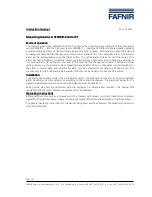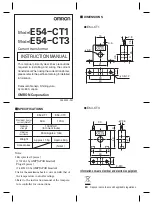
CC1000
SWRS048A Page 25 of 55
16. VCO
Only one external inductor (L101) is
required for the VCO. The inductor will
determine the operating frequency range
of the circuit. It is important to place the
inductor as close to the pins as possible in
order to reduce stray inductance. It is
recommended to use a high Q, low
tolerance inductor for best performance.
Typical tuning range for the integrated
varactor is 20-25%.
Component values for various frequencies
are given in Table 1. Component values
for other frequencies can be found using
the SmartRF
®
Studio software.
17. VCO and PLL self-calibration
To compensate for supply voltage,
temperature and process variations the
VCO and PLL must be calibrated. The
calibration is done automatically and sets
maximum VCO tuning range and optimum
charge pump current for PLL stability.
After setting up the device at the operating
frequency, the self-calibration can be
initiated by setting the
CAL_START
bit.
The calibration result is stored internally in
the chip, and is valid as long as power is
not turned off. If large supply voltage
variations (more than 0.5 V) or
temperature variations (more than 40
degrees) occur after calibration, a new
calibration should be performed.
The self-calibration is controlled through
the
CAL
register (see configuration
registers description p. 39). The
CAL_COMPLETE
bit indicates complete
calibration. The user can poll this bit, or
simply wait for 34 ms (calibration wait time
when
CAL_WAIT
= 1). The wait time is
proportional to the internal PLL reference
frequency. The lowest permitted reference
frequency (1 MHz) gives 34 ms wait time,
which is therefore the worst case.
Reference
frequency [MHz]
Calibration time
[ms]
2.4 14
2.0 17
1.5 23
1.0 34
The
CAL_COMPLETE
bit can also be
monitored at the CHP_OUT (LOCK) pin
(configured by
LOCK_SELECT[3:0])
and
used as an interrupt input to the
microcontroller.
The CAL_START bit must be set to 0 by
the microcontroller after the calibration is
done.
There are separate calibration values for
the two frequency registers. If the two
frequencies, A and B, differ more than 1
MHz, or different VCO currents are used
(
VCO_CURRENT[3:0]
in the
CURRENT
register) the calibration should be done
separately. When using a 10.7 MHz
external IF the LO is 10.7 MHz
below/above the transmit frequency,
hence separate calibration must be done.
The
CAL_DUAL
bit in the
CAL
register
controls dual or separate calibration.
The single calibration algorithm, using
separate calibration for RX and TX
frequency, is illustrated in Figure 16.
In Figure 17 the dual calibration algorithm
is shown for two RX frequencies. It could
also be used for two TX frequencies, or
even for one RX and one TX frequency if
the same VCO current is used.
In multi-channel and frequency hopping
applications the PLL calibration values
may be read and stored for later use. By
reading back calibration values and
frequency change can be done without
doing a re-calibration which could take up
to 34 ms. The calibration value is stored in
the
TEST0
and
TEST2
registers after a
calibration is completed. Note that when
using single calibration, calibration values
are stored separately for frequency
registers A and B. This means that the
TEST0
and
TEST2
registers will contain
calibration settings for the currently
selected frequency register (selected by
F_REG
in the
MAIN
register). The
calibration value can later be written into
TEST5 and TEST 6 to bypass the
calibration. Note that you must set
VCO_OVERRIDE=1 in TEST5 and
CHP_OVERRIDE=1 in the TEST6
register.
















































